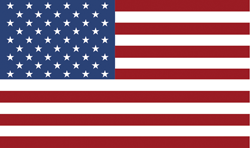Howard Coop, 32°, KCCH
A flag is a piece of cloth, but it is much more than that. It is defined as “a piece of cloth or bunting, often attached to a staff, with definite colors, patterns, or symbolic devices, used as a national or state symbol.”
On June 14, 1777, less than a year after the signing of the Declaration of Independence, the Continental Congress adopted a design for a flag for the new nation known as the United States of America. The Continental Congress determined that “The flag of the United States shall be thirteen stripes, alternate red and white, with a union of thirteen stars of white on a blue field, representing a new constellation.”
As the nation grew and the number of states increased, the design changed by adding a star to represent each new state. So, the flag we know and appreciate has thirteen stripes representing the original thirteen states and fifty stars representing the fifty states in the Union.
In 1895, to recognize the anniversary of the adoption of the flag, the Congress of the United States, without making it a legal holiday, declared June 14 to be Flag Day.
June 14, in all probability, will be a normal day. There will be little to distinguish it from other days, and business will go on as usual. Yet, at a number of locations, flags will be silhouetted against the blue sky. As it has for 234 years, the Stars and Stripes, a thing of rare beauty, will wave in the gentle breeze of spring as the symbol of the United States of America.
The beauty of that flag waving in the breeze is more than artistic design and skillful color coordination. Its real beauty is found in that for which it stands. It is the symbol of a nation known around the world as the land of the free and the home of the brave whose citizens love liberty, cherish freedom, and are willing to pay the price for these precious possessions.







